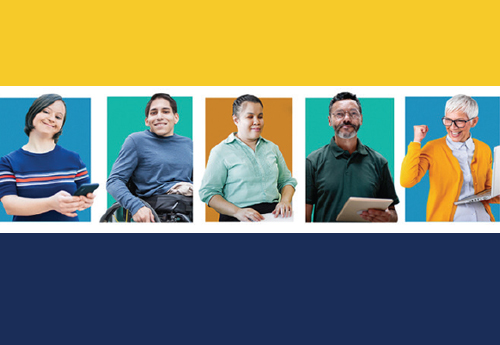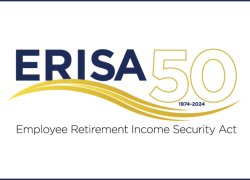 Each October we recognize National Disability Employment Awareness Month (NDEAM) to celebrate the value and talent disabled workers add to America’s workplaces and economy. That’s the spirit behind this year’s NDEAM theme, “Access to Good Jobs for All.” October is also Financial Planning Month. To recognize both occasions, we’re highlighting how financial planning can help people with disabilities access good jobs throughout their employment journey.
Each October we recognize National Disability Employment Awareness Month (NDEAM) to celebrate the value and talent disabled workers add to America’s workplaces and economy. That’s the spirit behind this year’s NDEAM theme, “Access to Good Jobs for All.” October is also Financial Planning Month. To recognize both occasions, we’re highlighting how financial planning can help people with disabilities access good jobs throughout their employment journey.
If you’re a person with a disability who is looking to secure your financial future, you’re not alone. You might be asking: Can I work if I receive SSI or SSDI? How can I save money I am earning from my new job? Can I use my ABLE account for things I buy to go to work? What do I do about healthcare if I lose my job? The U.S. Department of Labor has a financial toolkit that can help. The Secure Your Financial Future toolkit, jointly developed by the Employee Benefits Security Administration (EBSA) and the Office of Disability Employment Policy, is an up-to-date repository of financial literacy tools and resources beneficial to all Americans, including individuals with disabilities, striving to achieve financial stability. We all need clear and accurate information to secure our financial well-being.
No matter the stage of your employment journey, below are quick links to answers to important questions and tools and resources to help you meet your financial goals. Be sure to explore the “Retiring from a Job” topic for tools on how to get a head start on planning for a secure retirement:
- Preparing for a job – Every day, millions of Americans – including those with disabilities – look for jobs. Many are searching for their first job, while others are looking for a new job, new career or a promotion. Before you get ready to start, prepare a budget, determine your expenses and how much you need to earn and consider whether work might have an impact on any public benefits you receive.
- Starting a job – Once you get a job, decisions need to be made about pay and benefits. You may also need to request a workplace accommodation whether you are working in an office, at home or some other environment. If your new job offers a 401(k) or other retirement savings plan, sign up and contribute as much as you can – any retirement savings plan you have through your employment is an essential part of your future financial security.
- Maintaining a job – The longer you work, the more opportunities you will have to increase your income and contribute to your financial security. Many tools can help you learn how to manage your money so you can afford today’s needs and fund your future goals, whatever they may be – such as buying a home, going on vacation or saving for retirement. You can also read how Timothy Elliot, a disabled navy veteran, used the toolkit’s resources to take a hard look at his financial decisions and learn how to best plan for retirement.
- Changing or losing a job – Many of us will experience a time when we change or lose a job. You may be among those who lost your job due to economic challenges or you may be considering changing your job for a variety of reasons. Find answers to important questions and additional resources to help you during this transition.
- Retiring from a Job – Planning for retirement can come with a lot of questions. Understanding your job-based retirement benefits, healthcare benefits and other retirement savings all play a role in managing your personal budget for those retirement years. Learn how to take the best advantage of your retirement plan at work and what to do if your employer does not offer one. There is no such thing as starting to save too early or too late for retirement. The only mistake is not starting at all! Whatever your age, you can take steps now toward a more secure financial future.
Still have questions about planning for a secure financial future or about any of your employee benefits? Check out EBSA’s website or contact one of our Benefits Advisors. EBSA oversees all of the retirement, health and other welfare benefit plans offered through working for a private employer, so we are the one to call with your questions.
This month, wherever you are in your employment journey, get started with the toolkit on a path forward to meet your financial goals. Use the financial planning tips and tools for more financial stability now and in the future.
Lisa M. Gomez is the Assistant Secretary for the Employee Benefits Security Administration.

 U.S. Department of Labor Blog
U.S. Department of Labor Blog



